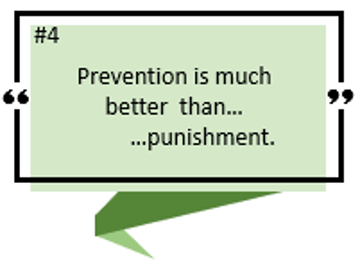16 Apr Words of Wisdom #4: Problem Prevention in the Classrooom
Repeated eye contact and physical proximity – a recipe for problem prevention in the classroom. Teacher “withitness” can not only prevent misbehavior before it occurs, but also it can improve classroom climate and increase student engagement.
PROBLEM PREVENTION IN THE CLASSROOM
Well, of course! This one seems obvious. Nip “stuff” in the proverbial bud before it gets a chance to blossom. Problem prevention is the goal. But the trick is HOW do you do it? It starts with something from WOW #2 – that thing about your two best classroom management tools being your eyes and feet. Making periodic, frequent, normal, pupil-to-pupil eye contact with students and walking around and looking over shoulders as they work communicates that you know what students are doing – and in some cases, thinking about doing. This “teacher withitness” leads to problem prevention. (For more on teacher withitness,” see https://owlcation.com/academia/Classroom-Management-Strategies-With-It-Ness .)
In making eye contact, select any student in the room as a starting point. Make a momentary (half second) eye contact with that student. Determine a pattern (e.g., left to right, spiral out from center, etc.) to make sure you include all students. Use that pattern to attempt momentary eye contact with each student in the room. Then select another student and repeat. Repeat. Ad infinitum. (And classrooms where teachers use this type of eye contact get higher student ratings in positive class climate!)
True Story – It Words with College Students, Too
For 20 years I prepared master’s level students to become teachers. These are serious students. They cover their own tuition, demand to make up any class time lost to snow because they have paid for it, and consider any off-task behavior in class (by themselves or another class member) as a waste of their money. Then for my last six years of teacher preparation I had undergrads as well. These were generally less serious students who still retained an edge of adolescence. It was one of these who announced in class one day as I moved among the tables of students, “You know, Professor, yours is the only class that we don’t text in.”
“Oh?” I replied. (“Oh” is a very useful word in these conversations – a noncommittal expression that invites the speaker to continue.)
“Yeah,” she replied, “you’ll see us.”

Frequent pupil-to-pupil eye contact and physical proximity are just two teacher techniques that can increase student engagement and decrease misbehavior.
I never consciously thought about watching students for cell phones. It’s just that in 16 years in the classroom I developed the habit of repeated eye contact and physical proximity with every student. These two communicate teacher awareness, shape student behavior, and result in problem prevention.
A HIERARCHY FOR PROBLEM PREVENTION
Also, consider the hierarchy of behavioral bud-nipping tools presented below (drawn from the work of Carol Cummings, 2000). The five presented here require no break in the lesson. The first one may surprise you… The remainder are techniques to help refocus a student’s attention.
- Ignore it. Some small things correct themselves without your intervention. Give the student a chance to self-correct.
- Try to make eye contact. Frequently make a pleasant, normal, human-to-human eye contact. However, in some cases you may need to use “the look.” I recommend practicing “the look” before a mirror until the mirror cracks. Reserve “the look” for extreme cases, as the less you use it, the more powerful its effect.

- With eye contact, use an appropriate gesture to indicate a desired change. For example, signal a 180-degree hand motion to request that a student should turn back around in a chair, or place a finger to lips to indicate no talking.
- Increase physical proximity to the student(s). Make sure the furniture is arranged so you can reach any student in no more than five giant strides.
- For the student who has momentarily “zoned out,” re-involve that student in the lesson without embarrassment. (Problem prevention and student embarrassment are mutually exclusive.) The technique here has three steps. (1) Call the student’s name in normal voice. (2) Give a brief recap of what was being discussed. (3) Ask an open-ended question where anything the student says will be acceptable. (Haven’t you ever zoned out momentarily? And how would you feel if someone publicly called you out on it?)
A FINAL FOOTNOTE – PUN INTENDED
I encourage you to make use of your eyes and feet. And oh, yes, do wear comfortable and supportive shoes. As a teacher, I always kept at least one extra pair to change midday. I found my level of pleasantness was influenced by how my feet felt.
For more thoughts on problem prevention, checkout the following two videos:
- The Law of Least Intervention https://www.youtube.com/watch?v=sjtj5Bx9n1U
- Getting Everyone’s Attention in Class https://www.youtube.com/watch?v=EC0ltKOwF_A
Until next week – may you experience success in all your academic endeavors!
Alene
Cummings, C.B. (2000) (2000). Winning Strategies for Classroom Management. Alexandria, VA: ASCD


